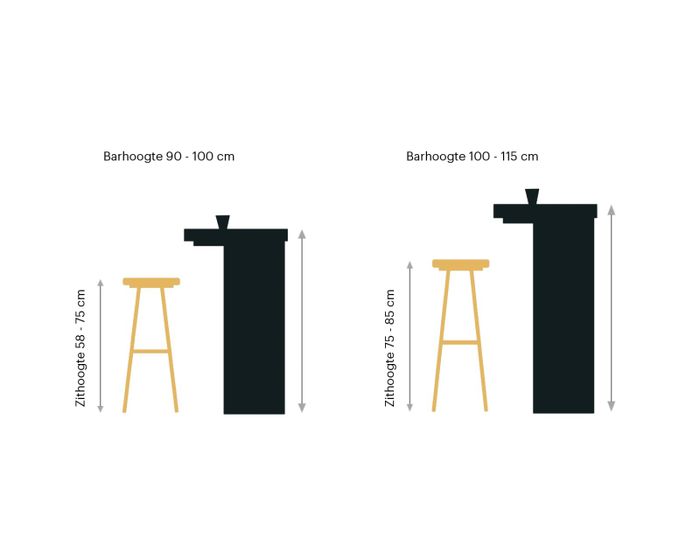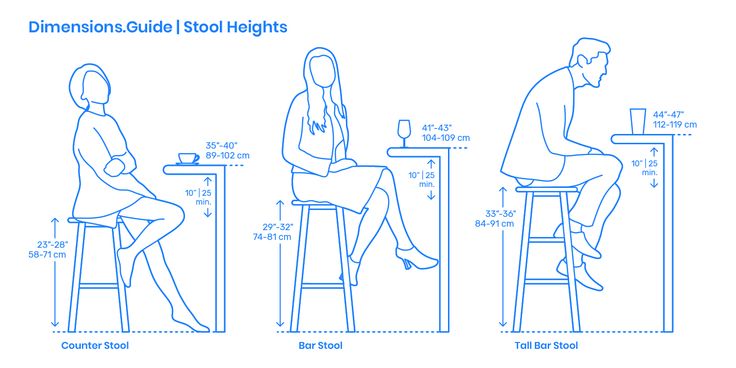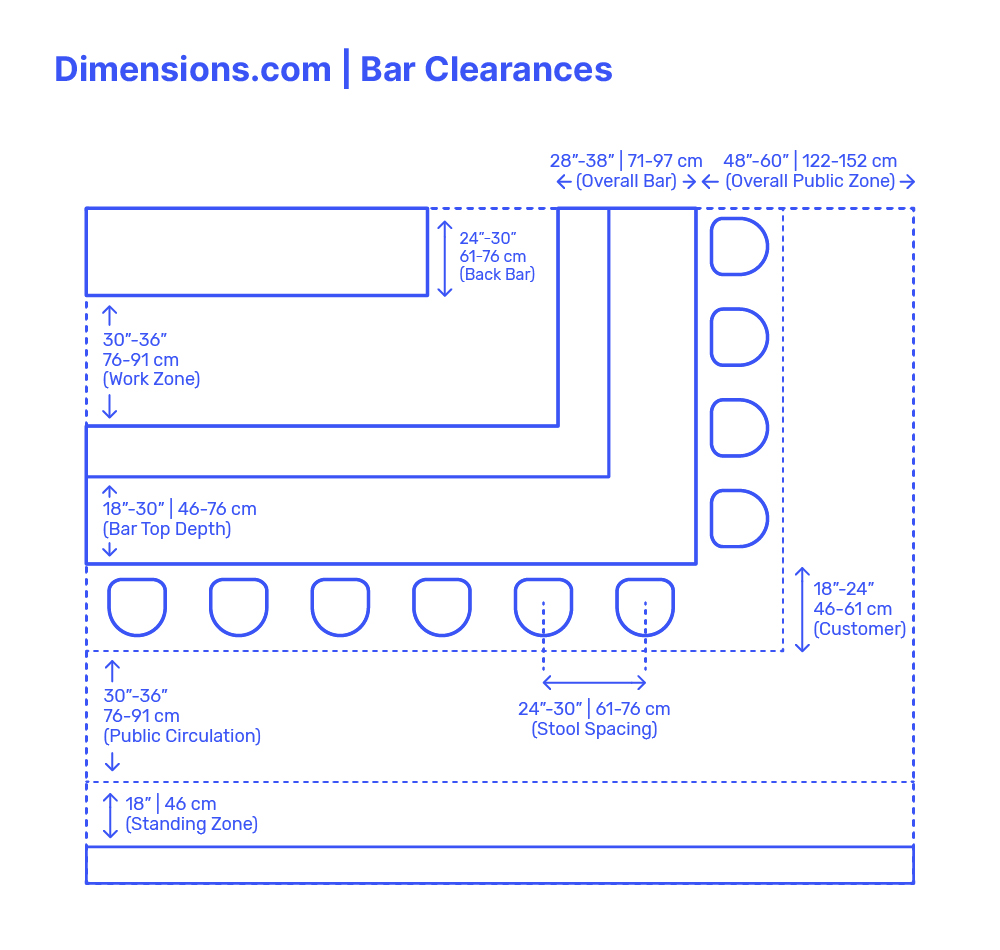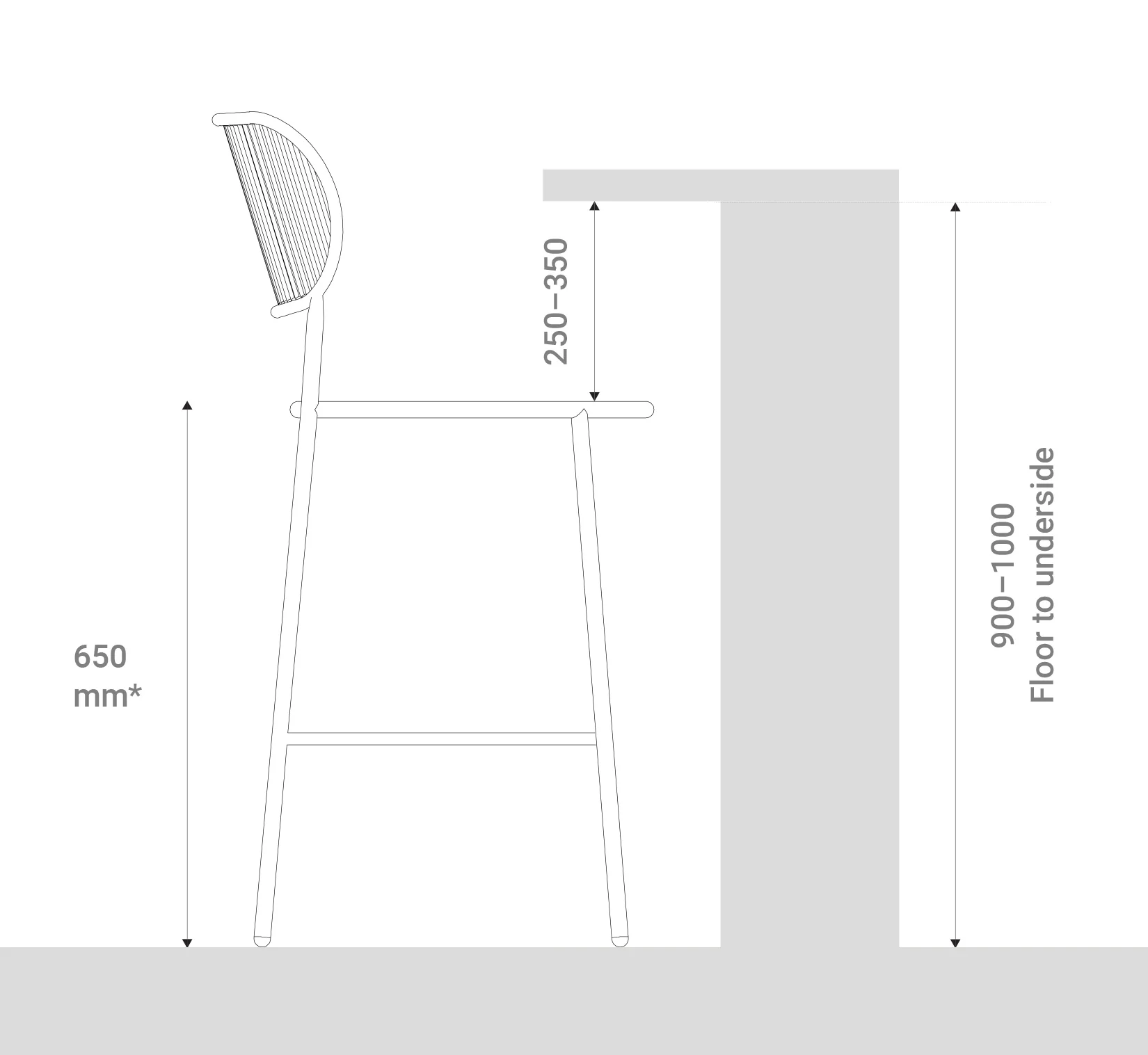
How to Choose Bar and Counter Stools: A Professional Guide
How to Choose Bar and Counter Stools: A Professional Guide
21 Affordable Italian Furniture Brands for Commercial and Contract Projects
10 Best Interior Design Tools And Their Key Features
10 Essential Software for Interior Designers
15 Key Factors in Choosing Commercial Furniture for Hospitality, Offices, and Public Space Projects
Unlock the Secrets of FF&E Spec Sheets: Comprehensive Guide and FAQs
Selecting the perfect bar and counter stools for your space involves carefully considering several factors to ensure they complement your design, meet functional needs, and enhance the overall aesthetic. This professional guide provides a step-by-step approach to choosing the best stools for your project.
Outline
Introduction
Importance of choosing the right stools
Overview of the guide
Assessing the Space
Measuring counter and bar height
Determining the number of stools needed
Understanding the layout and spacing
Defining the Style
Matching stools to design aesthetics
Popular styles and their characteristics
Integrating stools with existing decor
Choosing the Right Height
Bar height vs. counter height stools
Standard height ranges
Adjustable height options
Selecting the Shape and Size
Stool shapes: round, square, and rectangular
Seat size and comfort
Footprint and space efficiency
Material and Upholstery Choices
Wood, metal, and plastic options
Fabric, leather, and alternative upholstery
Durability and maintenance considerations
Color and Finish
Neutral vs. bold colors
Coordinating with the overall color scheme
Finishes: matte, glossy, and distressed
Comfort and Ergonomics
Seat cushioning and support
Backrests and footrests
Ergonomic features and adjustability
Quality and Construction
Frame materials and build quality
Joinery and stability
Weight capacity and durability
Budget and Value
Setting a budget for stools
Balancing cost and quality
Long-term investment considerations
Additional Features
Swivel and non-swivel options
Stackable and foldable designs
Customization and personal touches
Sustainability and Ethical Choices
Eco-friendly materials
Ethical manufacturing practices
Sustainable brands and certifications
Safety Considerations
Stability and tipping prevention
Non-slip feet and floor protection
Child and pet safety
Shopping Tips
Online vs. in-store shopping
Reading reviews and ratings
Understanding return policies and warranties
Finalizing Your Decision
Comparing shortlisted options
Seeking professional advice
Making the final purchase
Introduction
Choosing the right bar and counter stools is crucial for creating a functional and aesthetically pleasing space. This guide will help you navigate the essential criteria to select stools that fit your design vision and practical needs.
When selecting bar and counter stools, it's essential to consider how these pieces will integrate with the overall interior design. Think about how they complement flooring choices and furniture styles within the space. This ensures a cohesive look and feel, enhancing the dining or bar experience.
Assessing the Space
Before selecting stools, measure the counter or bar height, determine the number of stools needed, and understand the layout to ensure optimal spacing and functionality.
Measuring Counter and Bar Height: Use a tape measure to determine the height from the floor to the underside of the counter or bar.

Determining the Number of Stools Needed: Allow 24-30 inches of space per stool for comfortable seating.

Understanding the Layout and Spacing: Ensure enough space for movement and interaction.
Defining the Style
Align the stools with the overall design aesthetic of the space. Whether you prefer modern, rustic, or industrial styles, the stools should enhance the decor.
Matching Stools to Design Aesthetics: Choose styles that complement the existing design theme.
Popular Styles and Their Characteristics: Understand the features of different styles such as contemporary, traditional, and farmhouse.
Integrating Stools with Existing Decor: Ensure the stools blend seamlessly with other furnishings.
Read this article about trendy styles.
Choosing the Right Height
Selecting the appropriate height for your stools is essential for comfort and functionality. Differentiate between bar-height and counter-height stools and consider adjustable options.

Bar Height vs. Counter Height Stools: Bar stools typically have a seat height of 28-30 inches, while counter stools are 24-26 inches.
Standard Height Ranges: Ensure the stool height matches the counter or bar height.
Adjustable Height Options: Consider stools with adjustable heights for flexibility.
Selecting the Shape and Size
The shape and size of the stools affect comfort and space utilization. Choose from various shapes and ensure the seat size provides adequate comfort.
Stool Shapes: Round, Square, and Rectangular: Select the shape that fits best with your space and design.
Seat Size and Comfort: Ensure the seat is wide enough for comfort, typically 15-18 inches.
Footprint and Space Efficiency: Consider the stool's footprint and how it fits into the space.
Material and Upholstery Choices
The material and upholstery of the stools influence durability, maintenance, and comfort. Choose from wood, metal, plastic, fabric, leather, and other materials based on your needs.
Wood, Metal, and Plastic Options: Compare the benefits and drawbacks of each material.
Fabric, Leather, and Alternative Upholstery: Choose upholstery that suits the space's use and aesthetic.
Durability and Maintenance Considerations: Opt for materials that are easy to clean and maintain.
Color and Finish
Select colors and finishes that enhance the room's aesthetic. Consider neutral and bold colors, and choose finishes that match the overall decor.
Neutral vs. Bold Colors: Decide whether to make the stools a focal point or blend in.
Coordinating with the Overall Color Scheme: Ensure the colors complement the existing palette.
Finishes: Matte, Glossy, and Distressed: Choose finishes that align with the design style.
Comfort and Ergonomics
Comfort is key for bar and counter stools. Consider seat cushioning, support features, and ergonomic design elements.
Seat Cushioning and Support: Choose stools with adequate padding and support.
Backrests and Footrests: Ensure the stools provide sufficient back and foot support.
Ergonomic Features and Adjustability: Look for features that enhance comfort and usability.
Quality and Construction
Invest in high-quality stools to ensure longevity. Evaluate the frame materials, construction techniques, and stability.
Frame Materials and Build Quality: Prioritize sturdy and durable materials.
Joinery and Stability: Ensure solid construction and stability.
Weight Capacity and Durability: Check the stool's weight capacity and overall durability.

Budget and Value
Set a budget and aim for a balance between cost and quality. Consider the stools' long-term value and durability.
Setting a Budget for Stools: Define a budget that aligns with the project's scope.
Balancing Cost and Quality: Find the best quality within your budget.
Long-Term Investment Considerations: Consider the stools' longevity and return on investment.
Additional Features
Explore stools with additional features that enhance functionality. Consider swivel options, stackable designs, and customization possibilities.
Swivel and Non-Swivel Options: Choose based on the space's needs.
Stackable and Foldable Designs: Consider these for flexible use and storage.
Customization and Personal Touches: Personalize stools to match the project's design.
Sustainability and Ethical Choices
Choose eco-friendly materials and support ethical manufacturing practices. Identify brands committed to sustainability.
Eco-Friendly Materials: Opt for sustainable and recyclable materials.
Ethical Manufacturing Practices: Support brands with responsible practices.
Sustainable Brands and Certifications: Look for certified sustainable products.
Safety Considerations
Ensure the stools are safe and stable. Consider features like non-slip feet and floor protection.
Stability and Tipping Prevention: Choose stools with a stable base.
Non-Slip Feet and Floor Protection: Protect floors and prevent slipping.
Child and Pet Safety: Ensure stools are safe for all occupants.
Shopping Tips
Decide between online and in-store shopping, read reviews, and understand return policies and warranties.
Online vs. In-Store Shopping: Weigh the benefits of each option.
Reading Reviews and Ratings: Gather insights from other buyers.
Understanding Return Policies and Warranties: Know your options for returns and repairs.
Finalizing Your Decision
After narrowing down your options, compare them carefully, seek professional advice if needed, and make a confident purchase.
Comparing Shortlisted Options: Evaluate based on all criteria.
Seeking Professional Advice: Get expert opinions if necessary.
Making the Final Purchase: Ensure a well-considered decision
Faq
1. How do I determine the correct height for bar and counter stools? Measure from the floor to the underside of the counter or bar, then choose bar stools (28-30 inches) or counter stools (24-26 inches) accordingly.
2. What materials are best for bar and counter stools? Wood, metal, and plastic are common materials, each offering different aesthetics and durability. Consider the space's design and usage to choose the best material.
3. How many stools should I buy for my counter or bar? Allow 24-30 inches of space per stool for comfortable seating. Measure the length of your counter or bar and divide by this space to determine the number of stools needed.
4. What are the benefits of swivel bar and counter stools? Swivel stools offer easy movement and flexibility, making them ideal for social settings where users may need to turn and interact without moving the stool.
5. How do I ensure my stools are comfortable for long-term use? Look for features like cushioned seats, backrests, and footrests. Ergonomic designs and adjustable heights can also enhance comfort for extended periods.
6. Are there specific considerations for choosing stools for an outdoor space? For outdoor use, choose stools made from weather-resistant materials like treated wood, metal with rust-proof coating, or durable plastics. Ensure they can withstand elements like sun, rain, and humidity.
7. How do I match my stools to the existing decor? Select stools that complement the room's design style and color scheme. Consider materials, finishes, and shapes that harmonize with the existing furniture and decor.
8. What safety features should I look for in bar and counter stools? Ensure stools have a stable base, non-slip feet, and a design that prevents tipping. Child and pet-friendly features can also enhance safety in a family environment.
9. How can I incorporate sustainability into my stool selection? Choose stools made from eco-friendly and sustainable materials. Look for brands that follow ethical manufacturing practices and have sustainability certifications.
10. Should I consider custom stools for my project? Custom stools can provide a perfect fit for your space and design requirements. They allow for personalized upholstery, finishes, and unique design elements that align with your vision.
Further Read:
15 Key Factrs in Choosing Commercial Furniture for Hospitality, Offices, and Public Space Projects
21 Affordable Italian Furniture Brands for Commercial and Contract Projects
How to Design a Restaurant Booth: Dimensions, Layout, Details, and Mistakes to Avoid
Best Platforms to Find Interior Design Products
How to Choose Flooring Tiles for Your Bathroom: A Professional Guide
Criteria to Choose the Right Sofa: A Professional Guide for Interior Designers
12 Most Used Interior Design Websites
How to Find Furniture from a Photo
10 Best Interior Design Tools And Their Key Features